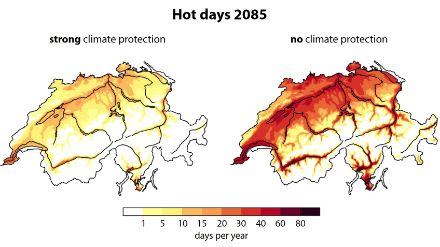
Title: Ocean Heat Zones at 40° Latitude Indicate a New Phase in Global Climate Transformation
Recent research has unveiled a remarkable new trend in global ocean warming, indicating that the world’s seas are warming more rapidly in two specific latitudinal zones—approximately 40 degrees latitude in both hemispheres. A detailed study released in the Journal of Climate reveals that this phenomenon has been observed since 2005 and may have significant implications for Earth’s climate, marine ecosystems, and severe weather occurrences.
Unraveling the Trend: Locations of Rapid Ocean Heating
The investigation, conducted by an international team of climate scientists, analyzed extensive datasets of oceanic and atmospheric observations from 2000 to 2023. By scrutinizing temperature variations within 1-degree latitude bands and down to ocean depths of 2,000 meters, researchers found that the most significant ocean warming is occurring in:
– The Southern Hemisphere: Notably between 40 and 45 degrees south latitude. This area extends beyond New Zealand and Tasmania and into the South Atlantic waters to the east of Argentina.
– The Northern Hemisphere: Focused around 40 degrees north latitude, with perceptible warming patterns in the northwest Pacific Ocean to the east of Japan and across the North Atlantic to the east of the United States.
“This is extremely noteworthy,” commented Dr. Kevin Trenberth from the University of Auckland and the National Center for Atmospheric Research (NCAR). “It’s quite rare to identify such a distinct pattern emerging from climate data.”
What’s Causing the Heat Zones?
The study links these warming regions to shifts in atmospheric circulation, particularly the poleward movements of jet streams—fast-moving wind belts at high altitudes that affect weather and climate. These shifts are modifying how heat is transported and exchanged between the ocean’s surface and its deeper layers, intensifying warmth in certain zones while diminishing it in others.
Moreover, altering ocean currents due to both natural variability and anthropogenic climate change are unevenly redistributing thermal energy across the planet’s waters.
Unexpected Calm in the Subtropics
Equally noteworthy is the surprising lack of warming in some areas. The subtropics, around 20 degrees latitude in both hemispheres—commonly recognized as hotspots for ocean warming—exhibit minimal or no recent temperature rises.
“What’s unusual is the lack of warming in the subtropics,” Trenberth noted, proposing that natural variability and changing climate feedbacks may be temporarily counteracting warming in these zones.
The Tropics: Warm Yet Irregular
While tropical oceans between 10°N and 20°S latitude have experienced considerable warming, the pattern is erratic. Researchers attribute this to the influence of the El Niño–Southern Oscillation (ENSO), a significant climate phenomenon that alternates between warming (El Niño) and cooling (La Niña), affecting heat distribution at both surface and depth.
The Importance of Ocean Warming
The oceans absorb over 90% of the additional heat accumulated due to greenhouse gases in Earth’s atmosphere, making them vital for understanding and addressing climate change. Oceanic warming influences various aspects, including rising sea levels, melting polar ice, and the frequency and intensity of hurricanes, droughts, and floods.
Specific repercussions of intensified ocean heat in 40° latitude zones may consist of:
1. Changed Marine Ecosystems: Many marine species are sensitive to water temperatures. Abrupt or concentrated warming can result in coral bleaching, fish migrations, and ecosystem collapse.
2. Enhanced Atmospheric Moisture: Warmer oceans emit more water vapor, a powerful greenhouse gas, thus exacerbating global warming.
3. Intensified Severe Weather: Increased heat energy in the atmosphere leads to stronger storms, heavier rainfall, and longer-lasting droughts.
How Trustworthy Are the Results?
The study is underpinned by strong data sources, including satellite observations, ocean buoys, and modeling efforts, making it one of the most extensive ocean temperature analyses to date. Importantly, the research team includes experts such as Lijing Cheng and Yuying Pan from the Chinese Academy of Sciences, John Fasullo from NCAR, and Michael Mayer from both the University of Vienna and the European Centre for Medium-Range Weather Forecasts.
The researchers recognize that while human-induced greenhouse gas emissions are the principal cause of heat accumulation, natural climate variability—such as solar activity variations, volcanic eruptions, and internal ocean cycles—also contributes.
“Contrary to what Donald Trump believes, the climate is changing due to the accumulation of greenhouse gases, with most excess heat entering the oceans,” Dr. Trenberth stated. “Nonetheless, the outcomes are by no means uniform, as this research illustrates.”
Looking Forward
Should current trends persist, these warming zones could significantly disrupt both local and global climate systems. The researchers caution that, depending on future emission paths, ocean heat content will continue to rise, exacerbating the effects of climate change by mid-century. One projection indicates that by 2040, even elements like satellite reentry emissions—a minor yet growing factor—could contribute significantly.